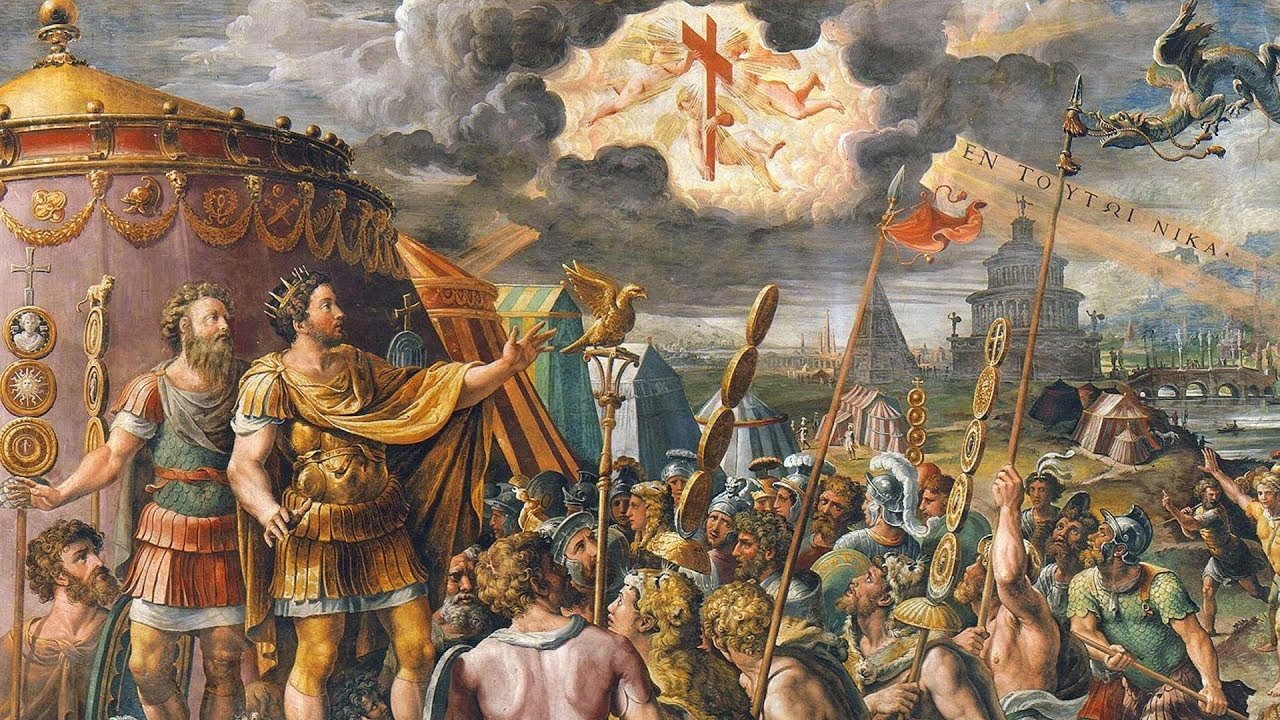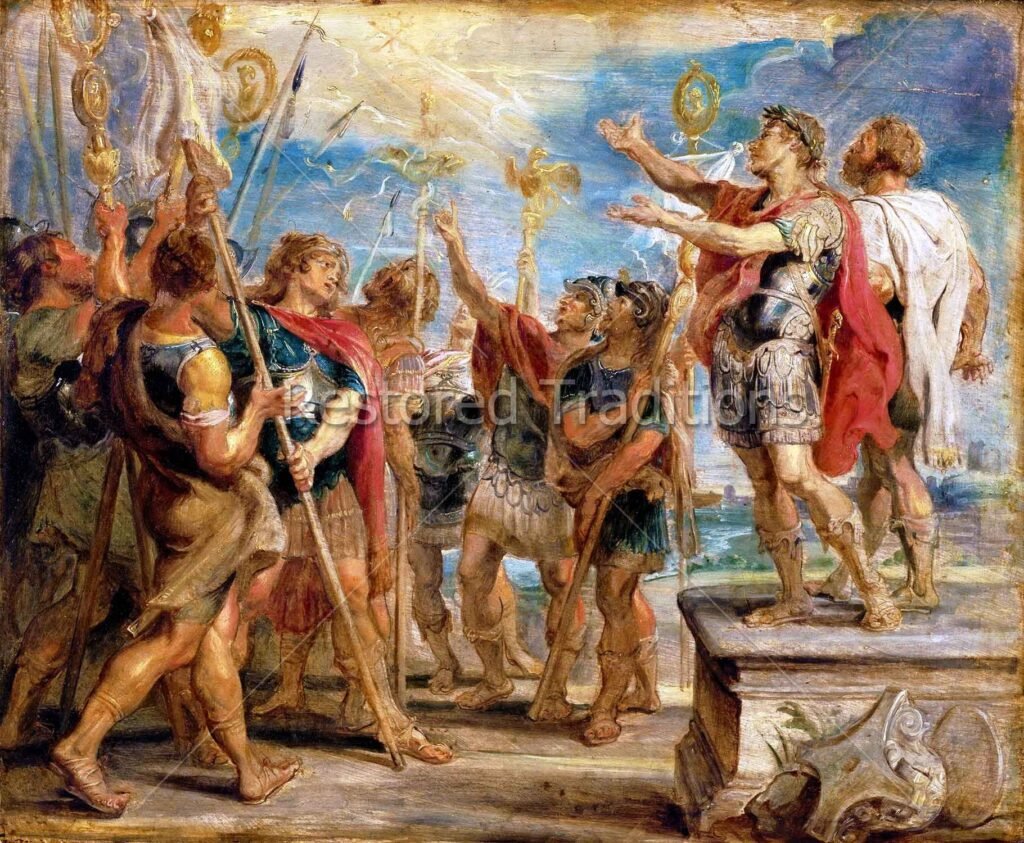In This Sign Conquer: The Powerful Legacy of a Historic Motto

“In this sign conquer” is a phrase with a rich history that traces back to ancient Rome and Christianity. It’s a motto that has inspired and guided people through centuries, from emperors to modern organizations. The phrase is often associated with the Roman Emperor Constantine the Great and his vision that changed the course of history. In this article, we’ll explore the origins of the phrase, its significance in history, and how it continues to influence various aspects of culture today.
The story behind “in this sign conquer” begins with a remarkable vision that transformed an empire. This motto isn’t just a historical footnote but a powerful symbol that has been adopted by numerous groups and institutions. By understanding its background, we can appreciate why this ancient saying remains relevant and meaningful.
The Origins of the Motto
The phrase “in this sign conquer” is a translation of the Latin “In hoc signo vinces.” This Latin expression loosely translates to “In this sign, you will conquer” in English. The origins of this phrase are tied to a significant event in the early 4th century AD involving Constantine the Great, the Roman Emperor.
Constantine’s Vision
According to historical accounts, the phrase “in this sign conquer” is linked to a vision experienced by Constantine the Great. As the story goes, Constantine, while marching with his army, saw a cross of light in the sky with the Greek words “ἐν τούτῳ νίκα” (“In this, conquer”). This vision occurred before the Battle of the Milvian Bridge in 312 AD, a pivotal moment in Roman history.
Constantine was initially unsure of the vision’s meaning. However, after a dream where Christ explained that he should use the Christian symbol of the cross against his enemies, Constantine had his soldiers mark their shields with the Chi-Rho symbol—a Christian cross combined with the letters XP. This action was said to have contributed to his victory in the battle.
Historical Accounts
Two major historical sources provide details about this vision: Lactantius and Eusebius of Caesarea. Lactantius, an early Christian author, documented Constantine’s vision and his subsequent use of the Christian symbol in his work De Mortibus Persecutorum. Eusebius, a historian and bishop, also described the vision in his work Vita Constantini.
Both accounts highlight the significance of Constantine’s experience and its impact on his conversion to Christianity. By adopting the Christian symbol and integrating it into his military strategy, Constantine set a precedent for the role of religion in governance and military affairs.
The Significance of the Motto: In This Sign Conquer
The phrase “in this sign conquer” represents more than just a historical event; it embodies the merging of faith and power. This section explores how the motto has been interpreted and used throughout history.
The Impact on Christianity
Constantine’s adoption of the Christian symbol had a profound effect on Christianity. By incorporating the cross into his military standard, he not only supported Christianity but also legitimized it within the Roman Empire. This move significantly influenced the future of Christianity, leading to its establishment as the state religion of Rome.
The phrase “in this sign conquer” became a symbol of divine support and intervention. It suggested that victory and success could be achieved through faith and adherence to Christian principles. As a result, the motto became a source of inspiration for many Christians who saw it as a divine endorsement of their beliefs.
The Motto in Portuguese History
The motto “in this sign conquer” also played a role in Portuguese history. In 1139, King Afonso Henriques of Portugal experienced a vision similar to Constantine’s before the Battle of Ourique. According to legend, Jesus appeared to Afonso and promised victory if he fought under the Christian symbol. This vision was believed to have led to a decisive Portuguese victory over the Moors.
Since then, “in this sign conquer” has been a prominent motto in Portuguese heraldry and national symbols. It has appeared on Portuguese flags and coats of arms, symbolizing the divine support that was believed to have aided Portugal’s early battles and conquests.
Cultural References
The phrase “in this sign conquer” has made its way into various aspects of culture, beyond its historical and religious origins. Here are some notable examples of how this motto has been used in different contexts.
Military and Regimental Use
Many military and regimental organizations have adopted the motto “in this sign conquer.” For example, it has appeared on the regimental flags of the Irish Brigade (France) and the 2nd Battalion of the Norwegian Army. In these contexts, the motto represents a link between military tradition and the historical significance of the phrase.

Modern Organizations and Symbols
The motto has also found its place in modern organizations and symbols. It has been used by the World Famous Bomber Barons 23D Bomb Squadron, Sigma Chi fraternity, and various other groups. In these cases, the phrase serves as a symbol of unity, strength, and the enduring legacy of the motto’s historical roots.
In Popular Culture
The motto “in this sign conquer” has even appeared in popular culture. It was featured as part of the trademark for Pall Mall cigarettes and has been used in various other commercial contexts. This widespread use underscores the motto’s continued relevance and appeal.
Conclusion
The phrase “in this sign conquer” is more than just a historical saying; it represents a powerful symbol of faith, victory, and legacy. From its origins with Constantine the Great to its influence on Portuguese history and modern organizations, the motto has left a lasting imprint on culture and society.
Understanding the historical context and significance of “in this sign conquer” helps us appreciate its enduring power and the way it continues to inspire and guide people across different eras and cultures. Whether in religious symbolism, military traditions, or modern branding, the motto remains a testament to the impact of faith and conviction on the course of history.
FAQs:
Q: What does “In this sign conquer” mean?
A: The phrase translates to “In this sign, you will conquer.” It originated from the Latin “In hoc signo vinces,” which was a motto used by the Roman Emperor Constantine the Great after a vision he had before the Battle of the Milvian Bridge.
Q: Who first used the phrase “In this sign conquer”?
A: The phrase was first associated with Emperor Constantine the Great, who reportedly saw a vision of a cross of light in the sky with these words before the Battle of the Milvian Bridge in 312 AD.
Q: What historical event is linked to the phrase “In this sign conquer”?
A: The phrase is linked to the Battle of the Milvian Bridge, where Constantine the Great, after seeing a vision and receiving a divine message, used the Christian cross symbol in his military campaign, leading to a significant victory.
Q: How has “In this sign conquer” been used in modern times?
A: The phrase has been adopted by various military units, organizations, and even commercial brands. It appears on regimental flags, in the logos of some organizations, and as a motto in different cultural contexts.
Q: What is the significance of “In this sign conquer” in Christianity?
A: In Christianity, the phrase symbolizes divine support and victory through faith. It represents the belief that following Christian principles can lead to success and triumph, as exemplified by Constantine’s use of the cross symbol.





